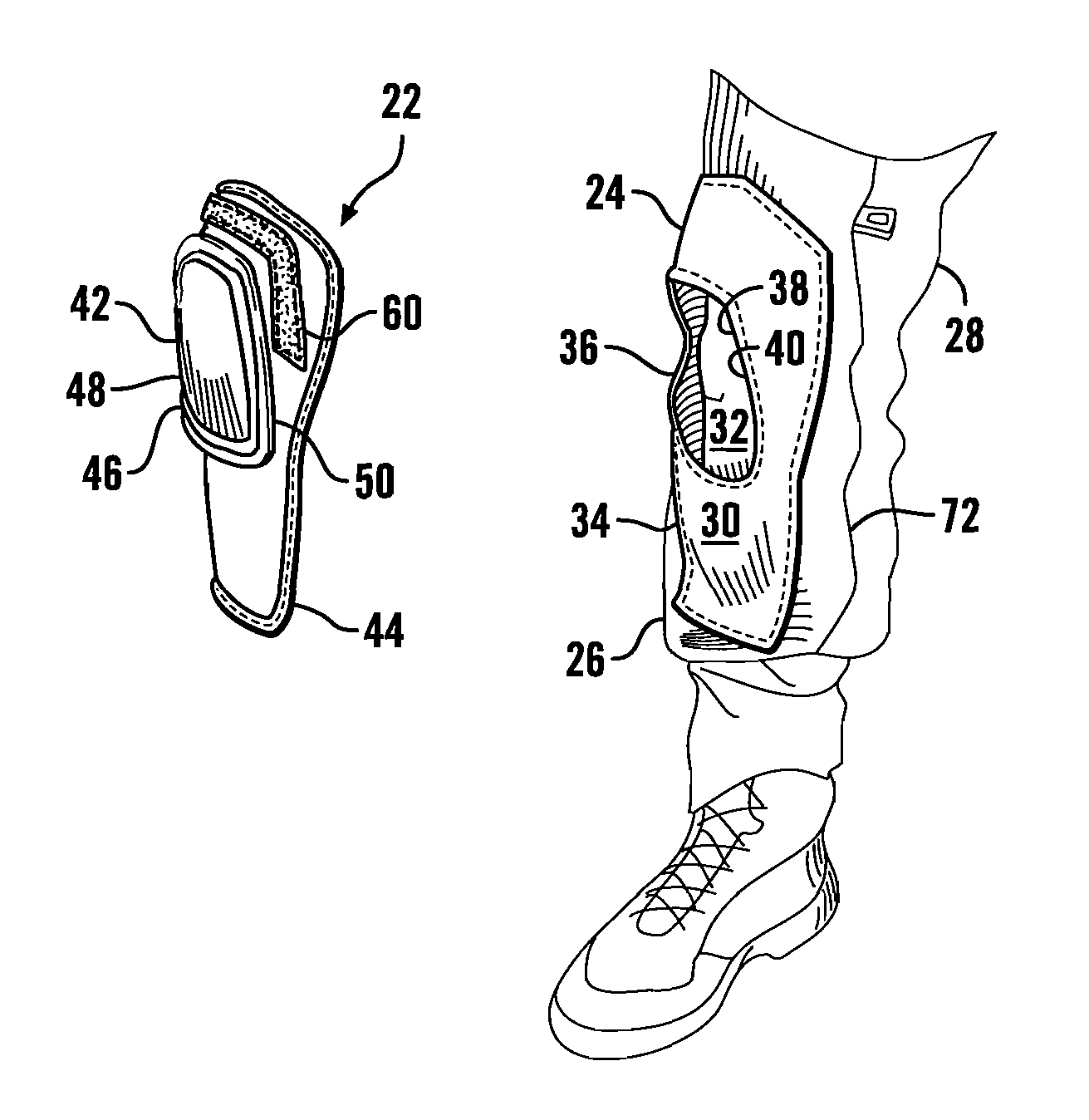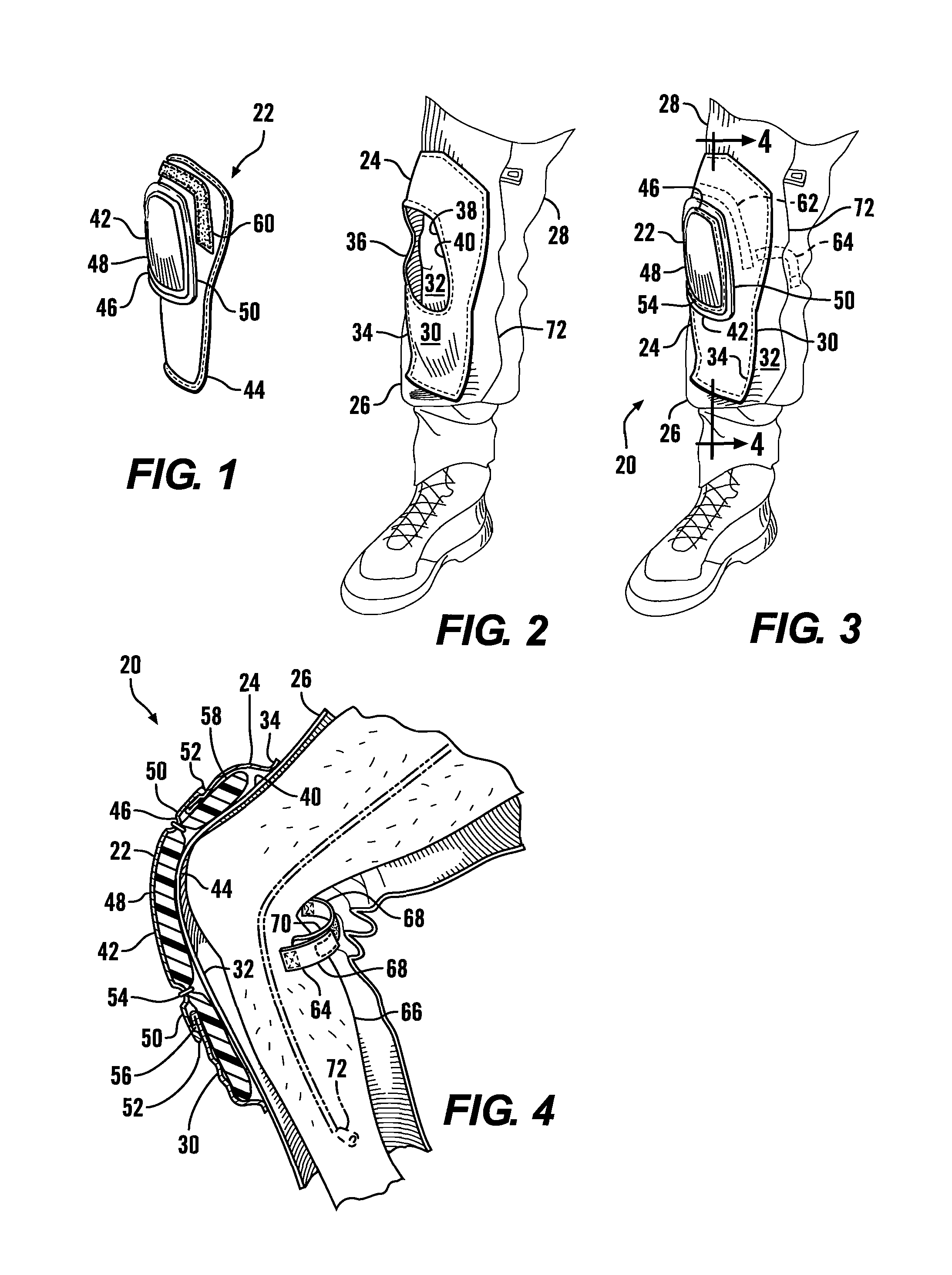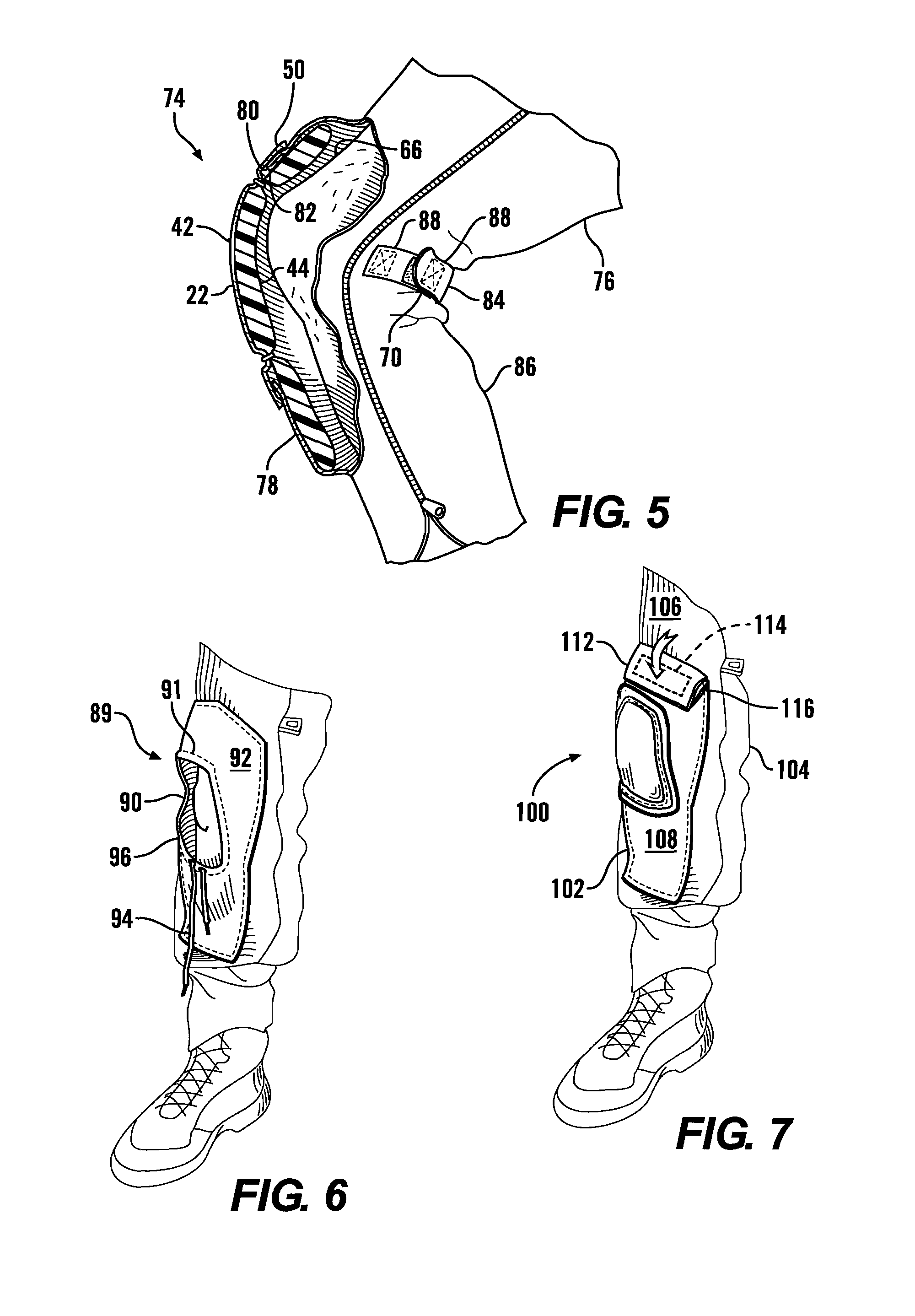Removable garment protective assembly
a protective assembly and removable technology, applied in the field of protective clothing, can solve the problems of joint injuries, limiting mobility, tight elastic straps, etc., and achieve the effect of convenient removal and replacemen
- Summary
- Abstract
- Description
- Claims
- Application Information
AI Technical Summary
Benefits of technology
Problems solved by technology
Method used
Image
Examples
Embodiment Construction
[0023]Referring more particularly to FIGS. 1–10, wherein like numbers refer to similar parts, a protective pad assembly 20 is shown in FIGS. 1–4. The protective pad assembly 20 is comprised of a protective element 22 shown in FIG. 1, and a pocket 24 formed on a pants leg 26 of a garment 28, for example a soldier's fatigues. The pocket 24 is accessible through a central opening 36, and in a first embodiment is not open at the top or sides as in a common pocket. As shown in FIG. 2, the pocket 24 is defined between a fabric front layer 30 and a frontwardly facing fabric substrate 32 of the garment 28. The protective pad assembly illustrated is a knee pad assembly, but a similar arrangement for an elbow or other body area pad may be provided.
[0024]The front layer 30 is connected to the garment substrate 32 at an outer peripheral seam 34, formed, for example, by stitching. A central opening 36 is defined in the front layer 30 which has an inner periphery 38 which may be finished by a sew...
PUM
 Login to View More
Login to View More Abstract
Description
Claims
Application Information
 Login to View More
Login to View More - R&D
- Intellectual Property
- Life Sciences
- Materials
- Tech Scout
- Unparalleled Data Quality
- Higher Quality Content
- 60% Fewer Hallucinations
Browse by: Latest US Patents, China's latest patents, Technical Efficacy Thesaurus, Application Domain, Technology Topic, Popular Technical Reports.
© 2025 PatSnap. All rights reserved.Legal|Privacy policy|Modern Slavery Act Transparency Statement|Sitemap|About US| Contact US: help@patsnap.com



